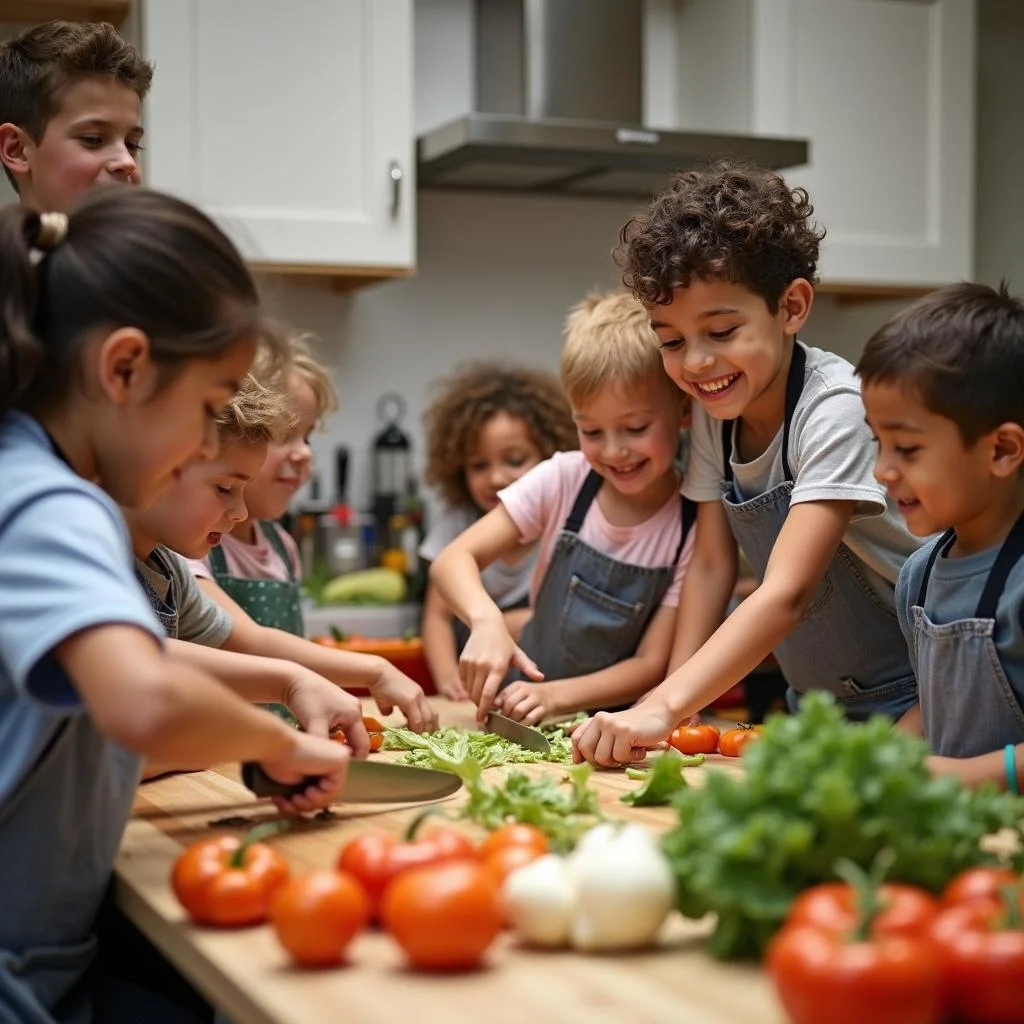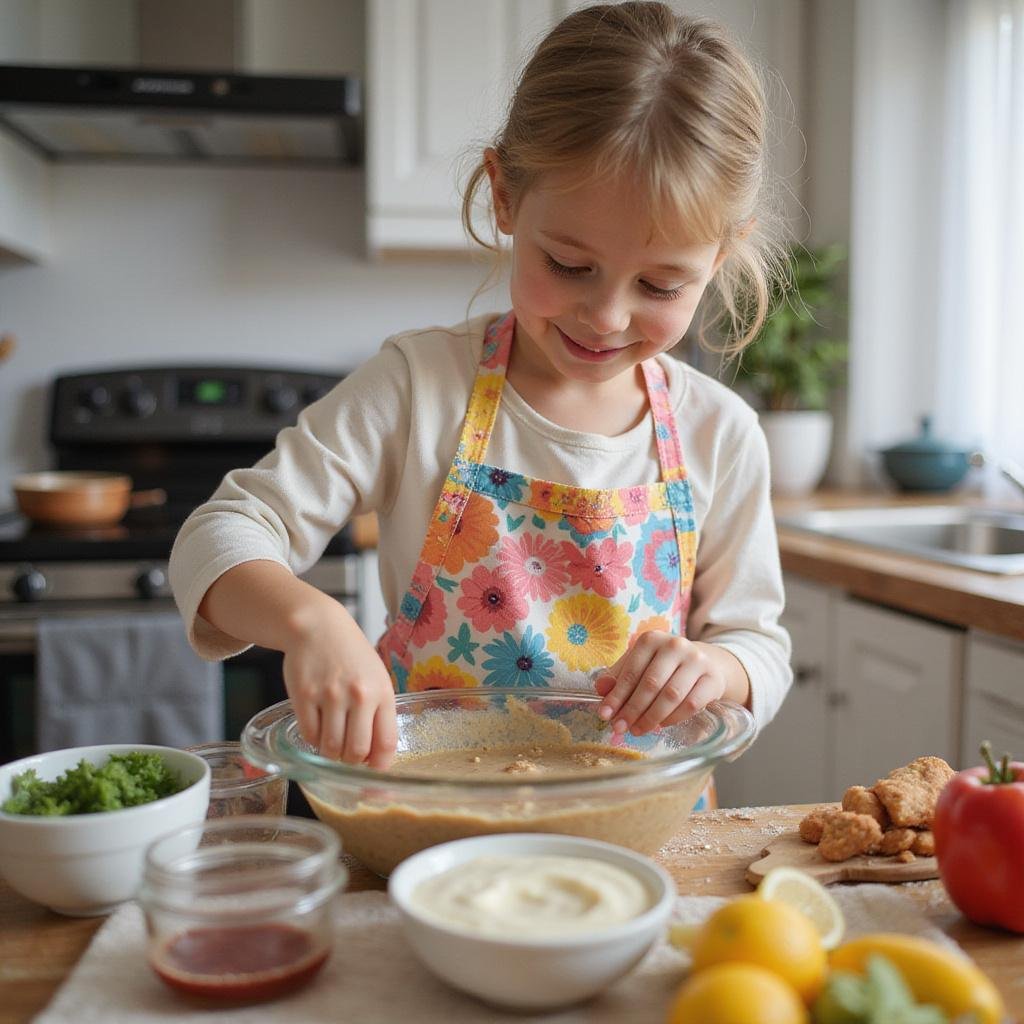1. Introduction
Cooking lessons for kids at home are an excellent opportunity to teach children vital life skills while fostering their creativity, independence, and love for food. Whether you’re a parent aiming to create quality family moments or looking to introduce your children to the joys of cooking, engaging them in fun and educational culinary activities is highly rewarding. In this comprehensive guide, we’ll explore the best techniques for conducting effective cooking lessons at home, highlight the numerous benefits, and provide practical, safety-conscious tips to ensure an enjoyable experience for all involved. Incorporating tools like the Ninja SLUSHi with RapidChill Technology and affordable kitchen gadgets such as the Fullstar Vegetable Chopper and Spiralizer can make the process more efficient and fun.
2. Why Are Cooking Lessons for Kids at Home Important?
Introducing children to cooking at home offers numerous advantages, including enhancing their fine motor skills, understanding nutrition, and building culinary confidence. Cooking lessons serve as a practical way to teach kids about healthy eating habits and foster family bonding over shared kitchen experiences. The importance of involving toddlers in meal prep and using creative approaches can make these lessons more effective. Additionally, owning essential kitchen appliances like the Ninja Air Fryer Pro 4-in-1 or the KitchenAid Classic Series Mixer can help streamline cooking activities, making them more accessible and enjoyable for young chefs.

3. How to Plan the Best Cooking Lessons for Kids at Home
Planning effective cooking lessons for children at home involves careful preparation to ensure safety, engagement, and success. Start with selecting age-appropriate recipes that match your child’s skill level—simple dishes like mini pizzas or fruit salads are perfect. Gather all necessary ingredients and tools ahead of time, such as the Ninja Blender, Mega Kitchen System for smoothies or the TOSHIBA Microwave Oven for quick heating tasks, to prevent delays. Focus on safety—teach proper knife handling and hygiene—and make the process fun by including themed activities or storytelling. Tools like the Cuisinart Bread Maker Machine can be fantastic additions to baking lessons, making the experience even more memorable.
4. Fun and Easy Recipes for Kids’ Cooking Lessons at Home
Choosing the right recipes can make kids’ cooking lessons more enjoyable and educational. Colorful, simple, and tasty options include making personalized mini pizzas where children can choose their toppings, or preparing a fresh Fruit Caesar Salad to introduce healthy eating. Baking delicious cookies is also highly engaging, especially when children get to decorate them. For nutritious meals, a quick vegetable stir-fry using the Fullstar Vegetable Chopper makes prep faster and safer. No-bake options like trail mix are easy and perfect for teaching portion control and mixing skills while enjoying delicious snacks.
5. Tips for Making Cooking Lessons for Kids at Home a Success
Create a positive, engaging environment with these expert tips: First, allow kids to be hands-on, encouraging independence through tasks like stirring and pouring. Visual aids and demonstrations are key—show proper techniques for chopping or whisking, perhaps using the KitchenAid Stand Mixer for mixing batters. Foster their creativity by letting children suggest variations or new recipes, and always celebrate their efforts to boost confidence. Incorporating fun elements, like themed dress-up or cooking challenges, can turn lessons into anticipated activities. Using quality tools like the Ninja SLUSHi for icy treats or the Ninja Air Fryer makes the process even more exciting.
6. Safety First: Essential Tips for Cooking with Kids at Home
Safety should always be the top priority. Always supervise children closely, especially near hot surfaces or sharp tools. Teach safe knife handling with child-friendly knives, such as those available alongside essential utensils in your KitchenAid Stand Mixer. Emphasize handwashing and cleanliness, and set clear rules about which tasks are safe for children alone. Keep a well-stocked first aid kit nearby, especially when teaching activities involving knives or hot appliances like the TOSHIBA Microwave Oven. When using appliances such as the Ninja SLUSHi, ensure children understand how to operate them safely to prevent accidents.
7. Common Challenges and How to Overcome Them
Teaching kids to cook at home can sometimes present challenges like impatience, messes, or safety concerns. Keep a positive attitude and be patient—their skills develop over time. Make cleanup a fun part of the lesson by turning it into a game—perhaps “the messiest chef wins a prize.” Set boundaries clearly, explaining which tasks are suitable for kids and which require adult help. Incorporating engaging tools such as the Ninja SLUSHi or the KitchenAid Mixer can help keep the learning process smooth and exciting.
8. FAQs About Cooking Lessons for Kids at Home
What are the best age groups for cooking lessons at home?
The best kw suggests children from around age 4 and older can safely participate in cooking lessons with activities tailored to their developmental capability. For younger kids, focus on simple tasks like pouring and mixing.
How can I make cooking lessons more engaging for kids?
Enhance engagement by integrating playful elements such as storytelling, themed recipes, or choosing recipes together. For instance, including the creative math activities using cooking makes learning multi-dimensional and fun.
What safety equipment do I need for cooking with kids?
Basic safety gear includes child-safe knives, oven mitts, aprons, and a accessible bread maker machine. Always supervise the use of hot appliances like the microwave to prevent accidents.
How often should I conduct cooking lessons for kids at home?
For consistent skill development, aim for weekly or bi-weekly sessions. Regular, manageable lessons help children retain what they learn and build enthusiasm over time.
9. Conclusion
Engaging children in cooking lessons at home is a powerful way to develop their kitchen skills, promote healthy eating, and create lasting memories. By choosing simple, colorful recipes, emphasizing safety, and incorporating fun tools like the Ninja SLUSHi or KitchenAid Stand Mixer, you can turn your kitchen into a delightful classroom. Start planning your next cooking adventure today and watch your children blossom into confident young chefs with a lifelong love for wholesome food.
Involving your toddler in meal prep Creative ways to teach kids math with cooking
